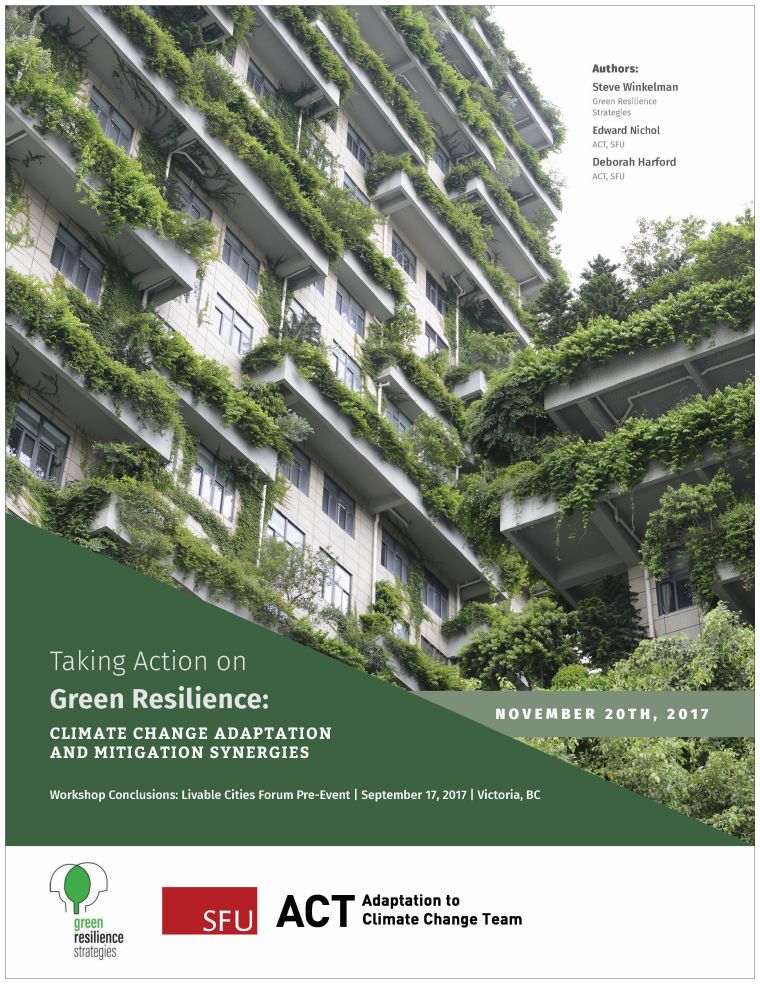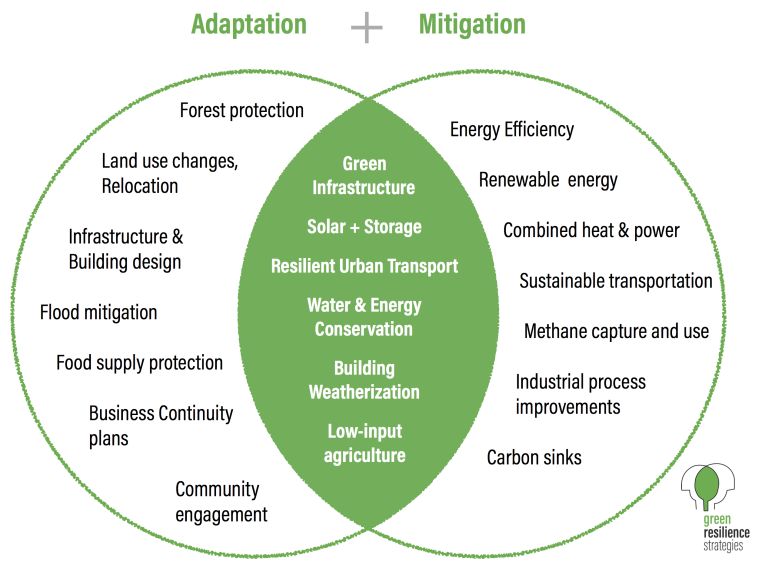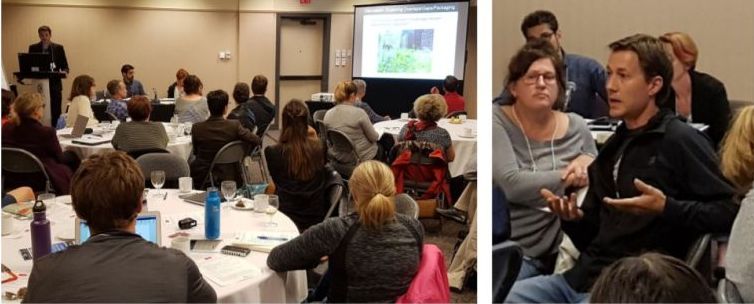“Communities can advance mitigation and adaptation agendas simultaneously through ‘Green Resilience’ strategies,” stated Deborah Harford, Executive Director, the Adaptation to Climate Change Team (ACT) at Simon Fraser University
Note to Reader:
In September 2017, two groups – the Adaptation to Climate Change Team (ACT) at Simon Fraser University, and Green Resilience Strategies – hosted a workshop as a pre-event to the Livable Cities Forum in Victoria, BC. The workshop outcomes are captured in a summary report titled Taking Action on Green Resilience: Adaptation and Mitigation Synergies.
Typically, climate change mitigation and adaptation have been approached as separate endeavours, but there are enormous benefits to integrating them using “Green Resilience” (or “low-carbon resilience”) strategies that both reduce GHG emissions and enhance climate resilience.
The Taking Action on Green Resilience workshop explored ways to integrate climate change mitigation and adaptation planning and increase the returns on investment in climate change and infrastructure solutions while attracting funding for implementation.
The Taking Action on Green Resilience summary report captures the workshop content, conclusions, and recommendations on needed research, capacity building and policies to advance green resilience practices.

Taking Action on Green Resilience: Adaptation and Mitigation Synergies – DOWNLOAD THE REPORT
A Call to Action: Inform Policy & Practice
“Climate change impacts such as flooding, drought, and other forms of extreme weather are projected to increase in frequency and severity in the future. These impacts are already causing environmental, social, health, and economic problems for Canadian communities,” stated Deborah Harford, ACT Executive Director.
 “There is now widespread recognition that we must plan responses to these impacts (climate change adaptation), and that reducing greenhouse gas (GHG) emissions (climate change mitigation) is a crucial priority if we are to minimize them.
“There is now widespread recognition that we must plan responses to these impacts (climate change adaptation), and that reducing greenhouse gas (GHG) emissions (climate change mitigation) is a crucial priority if we are to minimize them.
“Communities can advance mitigation and adaptation agendas simultaneously through ‘Green Resilience’ (GR) strategies, also referred to as ‘low carbon resilience’, to maximize the effectiveness of their climate change actions, and capitalize on unique funding opportunities.
“Green resilience projects allow municipalities to capitalize on funding opportunities that are designated for adaptation and/or mitigation.
“A variety of funding sources and tools that have potential for green resilience were documented in ACT’s 2015 report, Paying for Urban Infrastructure Adaptation in Canada, including internal funding and finance sources, external sources, and innovative sources.”
Convening for Action
“Last September, the Green Resilience workshop organizing team brought together 40 participants from across Canada in a pre-conference workshop at the 6th annual Livable Cities Forum, held in Victoria. Participants represented a wide variety of disciplines, including small to large jurisdictions at a variety of stages of progress on climate action.
“Workshop participants identified and discussed several adaptation and mitigation integration opportunities based on experience in their home communities, across five main categories: Infrastructure; Green Infrastructure; Buildings; Energy; and Community Planning. It was an opportunity for sharing and learning, with a desired outcome of informing policy and practice within organizations.”
To Learn More:
Download a copy of Taking Action on Green Resilience: Adaptation and Mitigation Synergies.

Climate Adaptation and Mitigation Synergies:
Green Resilience Strategies (2017). Graphic concept modified with acknowledgement of David MacLeod, City of Toronto
A+M = Adaptation + Mitigation synergies
Steve Winkelman introduced the Green Resilience concept to advance synergies between climate change adaptation and mitigation (A+M) measures. Steve specializes in assessing and communicating the economic, environmental and community benefits of sustainable urban development policies to bolster support for implementation. Previously a Director at the United States Center for Clean Air Policy, he founded Green Resilience Strategies in 2017.
 “Climate change mitigation and adaptation have traditionally been approached as separate endeavours, but there are compelling benefits to integrating them using Green Resilience (GR) strategies that both reduce GHG emissions and enhance climate resilience.
“Climate change mitigation and adaptation have traditionally been approached as separate endeavours, but there are compelling benefits to integrating them using Green Resilience (GR) strategies that both reduce GHG emissions and enhance climate resilience.
“Without integrated and proactive green resilience strategies, which is also sometimes referred to as low carbon resilience, project proponents risk wasting time and money on adaptation projects that miss energy efficiency opportunities, and/or emissions reduction efforts that are not resilient.”
“Infrastructure investments can also be leveraged – for example, screens can be developed to ensure development projects build in long-term resilience and low-carbon efficiency.
“Private investment from businesses, home owners and public-private partnerships may also be necessary to implement green resilience.”
“Strategically packaging projects for multiple funders and investors can attract more money and accelerate implementation based on policy and investor priorities, such as – critical infrastructure resilience, business continuity, reduced operating and capital costs, disaster prevention, affordable housing, health, and habitat protection.”
Now What?
“Workshop participants proposed a variety of recommendations on key needs for green resilience planning, funding, development and implementation in four categories: Research & Analysis, Capacity Building & Technical Assistance, and Policies,” summarized Deborah Harford.
“Plans are now under consideration to create a cross-country dialogue regarding climate resilience and GHG mitigation and to form working groups to advance recommendations on research, capacity-building, and policies to support implementation of green resilience solutions.”


